This article was co-authored by Souad Gharib. Souad Gharib is the Founder of Female Trainer, a boutique women's gym based in West London, United Kingdom. Souad specializes in helping women reach their goals through exercise, nutrition, and counseling. Female Trainer offers personalized training sessions delivered by Souad and her experienced team of female trainers.
There are 7 references cited in this article, which can be found at the bottom of the page.
wikiHow marks an article as reader-approved once it receives enough positive feedback. In this case, 100% of readers who voted found the article helpful, earning it our reader-approved status.
This article has been viewed 441,076 times.
Women’s bodies are similar to those of men, but females often have more difficulty building muscle mass. Therefore, women may need to focus more on their diet and workout routine than men to get the same results. The female body also goes through changes that men do not experience, such as pregnancy and menopause. Nevertheless, women can build strong, lean physiques with the same tools men use: good technique, persistence, a healthy diet, and an appropriate exercise schedule.
Steps
Creating a Workout Regimen
-
1Diversify your exercises. You will get a more total body workout by doing different exercises throughout the week. Remember to have split days.[1] Give your muscles at least 48 hours of rest after you have worked them according to this strategy. Your muscles become stronger during the rest period, not while you are lifting.[2]
- Adjust the weight you work with and the number of sets you perform, and don't be afraid to try new things.[3]
-
2Consider exercising in the pool. Swimming is a great workout for both building upper body strength and cardio. There are also special water exercises like ball training and core workouts. Even doing basic resistance training by walking or running in a pool can be great ways to build muscle in parts of your body neglected by typical strength training exercises.Advertisement
-
3Work out 3 to 5 times a week.[4] Some people find that joining a gym helps them stick to this schedule. That said, it's certainly possible to strength train at home. While traditional weight equipment such as dumbbells and barbells are a common choice, they are not required. Any form of resistance training will help build muscle.
-
4Train with heavy weights in the gym. Don't worry about getting too bulky. It is much easier to build muscle with heavier weights. Here's one approach you can use:[5]
- Choose a weight that you can perform 5 to 6 reps with per set. The exact weight you choose will depend on your strength when starting.
- Perform the main 3 weight training exercises regularly. These include bench presses, dead lifts and squats.
- Do 3 sets of 5 to 6 repetitions. You should rest for 2 to 3 minutes between each set. If you're lifting correctly, you should need those 2 to 3 minutes to recuperate.
- There are many other exercise plans you can follow with weights. Other weight trainers and gym staff are often happy to suggest approaches as well.
-
5Cut down the time you spend in the gym each day. Keep the length of your workouts to a minimum. Try not to spend 2 hours in the gym doing repetition after repetition. This can increase your endurance, but building muscle mass requires short, hard workouts.
-
6Keep your focus in the gym mostly on weight training. Cardio has its benefits, but strength training can often produce better and faster results for fat loss. Add cardiovascular exercise into your workout plan sparingly. Keep it 45 minutes and under, and perform it before you use weights.[6]
-
7Push yourself to the limit in the gym. Go as hard as you can every time. You won't build muscle, lose fat, or achieve many fitness goals if you don't push yourself hard. Consider using a personal trainer, even if it is only to help you make sure that you are doing the right exercises and doing them properly.
- Consider finding a workout partner who can push you in the gym. Working out as a team can produce greater results than working out alone.
Adjusting Your Diet For Muscle Gain
-
1Eat the right amount of healthy food. Consume enough calories by taking into account how many you burn during your workout.[7] Women require between 1800 and 2000 calories per day to maintain their health. If you are burning 300 to 500 calories during your workout, you need to eat more throughout the day.
-
2Consume lots of protein and carbohydrates. Eat protein-rich foods both before and after your weight-training workout. Protein builds muscle mass; carbs give you energy and help the protein find your muscle cells.
-
3Snack healthily throughout the day. The need to eat often may be one of the more enjoyable aspects of muscle gain for many, but be careful. Keep an eye on how many snacks you are eating, and what kind of food it is. You can get many of the muscle-building nutrients you need from regular food, but protein shakes are an acceptable substitute. Sugars are fatty and only supply you with energy in the short term, so shy away from sweet empty calorie snacks.
- Eat well and often between larger meals. Snacking keeps your metabolism going, allowing you to burn more calories when you're not working out.
- Whey protein shakes are a healthy post-workout meal that help build your muscle mass.
Working Out During and Post-Menopause
-
1Create a workout plan for your lifestyle. This is a transitional period for everyone, so your daily routine may be changing. Since your strength and resilience are not what they used to be, a more moderate exercise regimen may be necessary. Find ways to get regular aerobic exercise several times a week. Work in strength training a couple times a week to maintain your strength. Don’t forget to stretch![8]
-
2Start small if you didn't strength train before. If you are starting a new muscle-building routine after menopause, start with light weights or relatively low-intensity exercises that tire you after about 12 repetitions. You will be able to increase the weight as you get stronger, but stay within a comfortable range. Menopause causes bone loss and muscle loss, so use caution while you discover your limits. The good news is that regular exercise helps with both of these issues.[9]
- If you started lifting before menopause, you can continue your usual exercise plan as long as you are comfortable and enjoying the results.
-
3Form a balanced exercise plan. Focusing on weight training during and after menopause is a great plan, since it helps maintain bone density. That said, this is also a good time to review the other types of exercise you get, and consider some adjustments:
- High-impact exercise such as running can be hard on your bones and joints, potentially risking fractures or other injuries. If you have joint pain, consider moving to low-impact aerobic exercise such as biking or swimming.
- Balance and coordination become more important with age, as weakened bones can make a fall more dangerous. Improve these skills with step classes, dance, or a sport like tennis that requires rapid movement.
Expert Q&A
-
QuestionHow should a woman complete sets?
 Laila AjaniLaila Ajani is a Fitness Trainer and founder of Push Personal Fitness, a personal training organization based in the San Francisco Bay Area. Laila has expertise in competitive athletics (gymnastics, powerlifting, and tennis), personal training, distance running, and Olympic lifting. Laila is certified by the National Strength & Conditioning Association (NSCA), USA Powerlifting (USAPL), and she is a Corrective Exercise Specialist (CES).
Laila AjaniLaila Ajani is a Fitness Trainer and founder of Push Personal Fitness, a personal training organization based in the San Francisco Bay Area. Laila has expertise in competitive athletics (gymnastics, powerlifting, and tennis), personal training, distance running, and Olympic lifting. Laila is certified by the National Strength & Conditioning Association (NSCA), USA Powerlifting (USAPL), and she is a Corrective Exercise Specialist (CES).
Fitness Trainer During sets, your last repetition should be nearly impossible for you to accomplish. You want your muscles to be completely fatigued after a set.
During sets, your last repetition should be nearly impossible for you to accomplish. You want your muscles to be completely fatigued after a set. -
QuestionHow do your muscles grow?
 Michele DolanMichele Dolan is a BCRPA certified Personal Trainer in British Columbia. She has been a personal trainer and fitness instructor since 2002.
Michele DolanMichele Dolan is a BCRPA certified Personal Trainer in British Columbia. She has been a personal trainer and fitness instructor since 2002.
Certified Fitness Trainer When we work our muscles harder than what they are used to, they form micro tears. Our bodies repair and reinforce the torn tissue, building the density and size of muscle. It is a very gradual process.
When we work our muscles harder than what they are used to, they form micro tears. Our bodies repair and reinforce the torn tissue, building the density and size of muscle. It is a very gradual process. -
QuestionWhat supplements should I take to gain muscle and lose fat?
 Michele DolanMichele Dolan is a BCRPA certified Personal Trainer in British Columbia. She has been a personal trainer and fitness instructor since 2002.
Michele DolanMichele Dolan is a BCRPA certified Personal Trainer in British Columbia. She has been a personal trainer and fitness instructor since 2002.
Certified Fitness Trainer Protein supplements help to provide the essentials for muscle tissue building and can help control hunger. Remember losing fat requires an overall calorie deficit, and no supplement can reduce your calorie intake!
Protein supplements help to provide the essentials for muscle tissue building and can help control hunger. Remember losing fat requires an overall calorie deficit, and no supplement can reduce your calorie intake!
Warnings
- Lifting close to the maximum weight you are able to lift requires good technique and has an inherently higher risk of injury. Take the time to build technique and strength before trying this method.⧼thumbs_response⧽
- Always consult your physician before beginning an intense workout regimen.⧼thumbs_response⧽
- Always consult your physician before drastically changing your diet or introducing supplements.⧼thumbs_response⧽
- If you are pregnant, ask your healthcare provider about safe exercise routines. It is dangerous to both you and your child to engage in an intense, or even moderate, physical activity.⧼thumbs_response⧽
Things You'll Need
- Barbells
- Dumbbells
- Healthy food
- Whey protein shake (optional)
- Partner (optional)
References
- ↑ Souad Gharib. Exercise & Wellness Specialist. Expert Interview. 8 July 2021.
- ↑ http://www.mayoclinic.org/healthy-lifestyle/fitness/in-depth/weight-training/art-20047116
- ↑ Souad Gharib. Exercise & Wellness Specialist. Expert Interview. 8 July 2021.
- ↑ Laila Ajani. Fitness Trainer. Expert Interview. 31 October 2019.
- ↑ http://www.bodybuilding.com/fun/pauline5.htm
- ↑ http://www.womenshealthmag.com/fitness/weight-exercises-women
- ↑ Alphonso White. Certified Personal Trainer, CompleteBody NYC. Expert Interview. 24 February 2021.
- ↑ http://www.mayoclinic.org/healthy-lifestyle/womens-health/in-depth/fitness-tips-for-menopause/art-20044602
- ↑ http://www.mayoclinic.org/healthy-lifestyle/womens-health/in-depth/fitness-tips-for-menopause/art-20044602
About This Article
You can gain muscle as a woman by working out regularly and making some simple changes to your diet. Aim to do 3 to 5 sessions of strength-training a week to build muscle quickly. Use the heaviest weights you can comfortably lift and do 3 sets of 5 or 6 reps for each session. You should also eat some extra healthy snacks or drink a protein shake each day, which your body will convert into muscle mass. Eat a balanced diet with plenty of healthy carbohydrates and extra protein to help you build muscle and stay energized throughout the day. Some healthy sources of protein include lean meats, egg, fish, and beans. For more tips from our Personal Training co-author, including how to workout during and after menopause, read on!
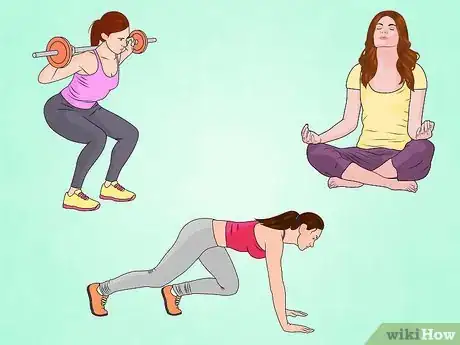


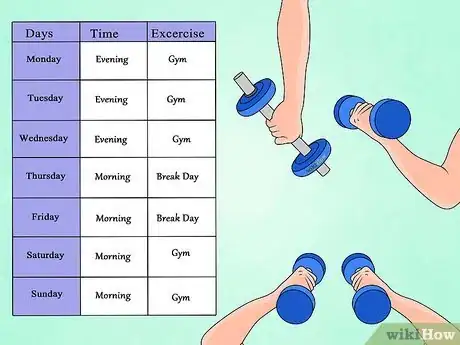


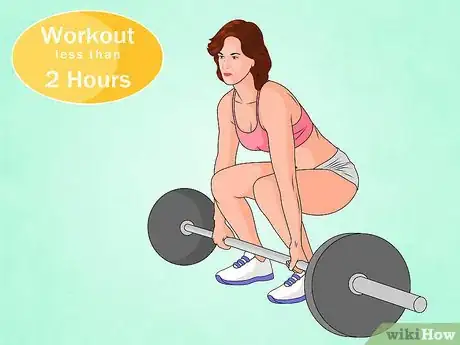
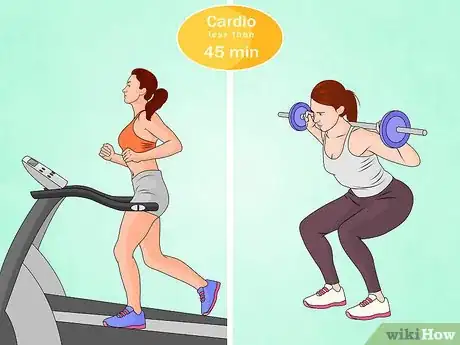
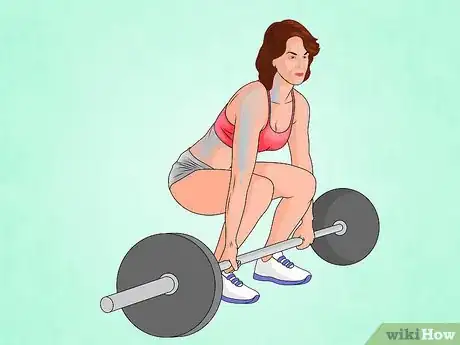
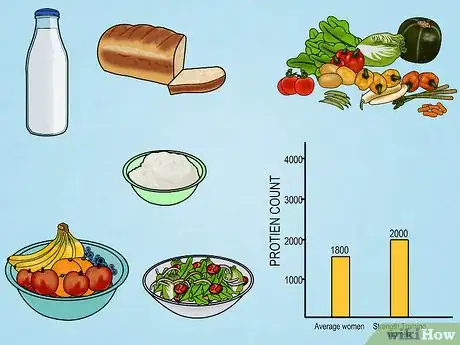


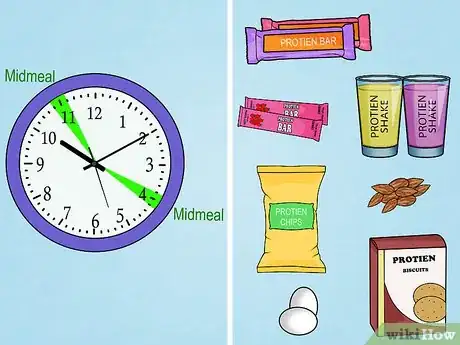
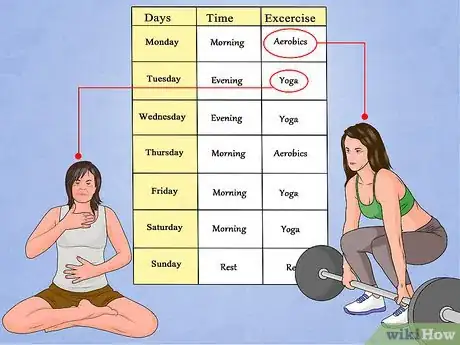
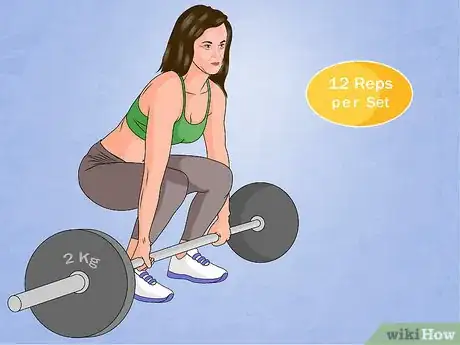
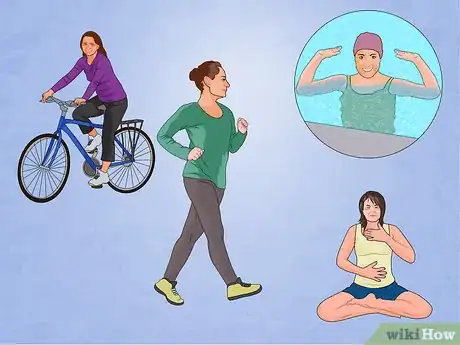
-Step-16-Version-2.webp)




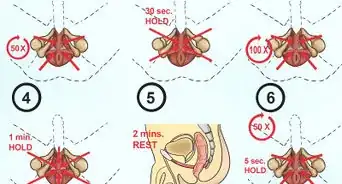

-Step-24.webp)










-Step-16-Version-2.webp)





































